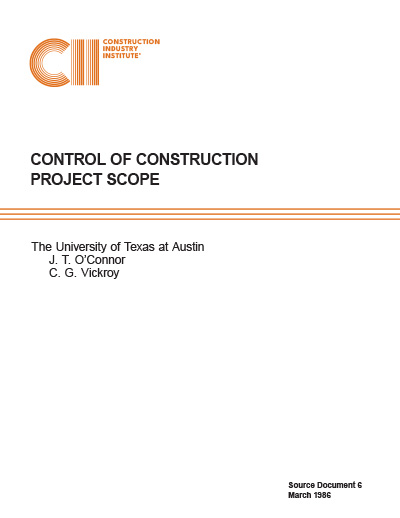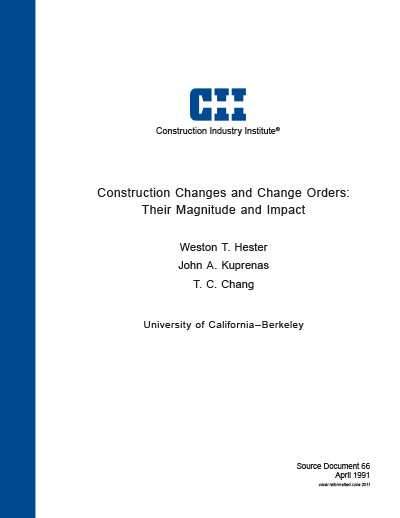
Control of Construction Project Scope
The Business Roundtable Report A-6 stated that “Poor scope definition at the time of budgeting ranks as the highest impact item that causes projects to run over budget. Loss of scope control during design ranks second in impact.” (Business Roundtable, 1982) A recent doctoral dissertation (Smith, 1983) reported that construction industry officials considered lack of scope definition to be the most serious problem on construction projects. Therefore the first goal of this report is to explore the major problems caused by inadequate scope definition. For each problem area identified, the report will answer three questions:
- What is the problem, and why is it a problem?
- How does poor scope definition contribute to the problem?
- What can industry members do to control or reduce this problem?
Equally important to the impacts of poor scope definition are the causes of poor scope definition. The fact that inadequate scope definition causes problems on projects is well recognized, yet projects are still undertaken in this manner. Assuming there are circumstances which preclude full scoping of projects, the report will show a systematic framework for the decision on the level of project definition to be provided.
Blanket recommendations of company procedures, applying to all firms, cannot be made in a report of this nature. Rather, the report attempts to identify the factors, and impacts of the factors to be considered in making procedural decisions. It is the intent of this report to stimulate thought by decision-makers on how they can reduce the problems caused by poor scope definition.
Given that poor scope definition can have significant negative impact to projects and that market pressure often precludes adequate scope definition, some ways of controlling scope throughout the project duration include (SD-6, p. 77):
- Improve the quality of early cost estimates and employ risk analysis techniques to identify the potential range of outcomes
- Utilize work breakdown structures
- Utilize computer aided design to estimate bulk quantities
- Make designers responsible for quantities generated
- Require estimators to document basis of estimate
- Utilize modern computer equipment and software


